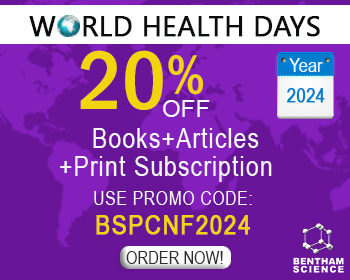Abstract
Cardiac and vascular diseases are often associated with increased oxidative stress and inflammation, and both may contribute to the disease progression. However, successful applications of antioxidants in the clinical setting are very rare and specific anti-inflammatory therapeutics only emerged recently. Reasons for this rely on the great diversity of oxidative stress and inflammatory cells that can either act as cardioprotective or cause tissue damage in the heart. Recent large-scale clinical trials found that highly specific anti-inflammatory therapies using monoclonal antibodies against cytokines resulted in lower cardiovascular mortality in patients with pre-existing atherosclerotic disease. In addition, unspecific antiinflammatory medication and established cardiovascular drugs with pleiotropic immunomodulatory properties such as angiotensin converting enzyme (ACE) inhibitors or statins have proven beneficial cardiovascular effects. Normalization of oxidative stress seems to be a common feature of these therapies, which can be explained by a close interaction/crosstalk of the cellular redox state and inflammatory processes. In this review, we give an overview of cardiac reactive oxygen species (ROS) sources and processes of cardiac inflammation as well as the connection of ROS and inflammation in ischemic cardiomyopathy in order to shed light on possible cardioprotective interventions.
Keywords: Cardiac disease, inflammation, oxidative stress, anti-inflammatory therapy, acute myocardial infarction, cardiac remodeling, cardioprotection.
[http://dx.doi.org/10.1038/ng.3914] [PMID: 28714974]
[http://dx.doi.org/10.1038/ng.3874] [PMID: 28530674]
[http://dx.doi.org/10.1016/j.autrev.2011.01.004] [PMID: 21281743]
[http://dx.doi.org/10.1016/j.atherosclerosis.2012.05.013] [PMID: 22673743]
[http://dx.doi.org/10.1111/j.1529-8019.2010.01308.x] [PMID: 20415821]
[http://dx.doi.org/10.1002/art.24537] [PMID: 19790130]
[http://dx.doi.org/10.1093/eurheartj/ehp567] [PMID: 20037179]
[http://dx.doi.org/10.1136/ard.2009.113696] [PMID: 19773290]
[http://dx.doi.org/10.1681/ASN.2006080918] [PMID: 17130265]
[http://dx.doi.org/10.1038/jid.2009.59] [PMID: 19322214]
[http://dx.doi.org/10.1056/NEJMoa1109997] [PMID: 22455413]
[http://dx.doi.org/10.1056/NEJMoa1109017] [PMID: 22455412]
[http://dx.doi.org/10.1155/2010/943254] [PMID: 20379379]
[http://dx.doi.org/10.1093/rheumatology/kes113] [PMID: 22718924]
[http://dx.doi.org/10.1161/01.CIR.100.21.2124] [PMID: 10571968]
[http://dx.doi.org/10.1093/eurheartj/eht367] [PMID: 24026779]
[http://dx.doi.org/10.2174/13816128113196660748] [PMID: 24180381]
[http://dx.doi.org/10.1056/NEJMoa1707914] [PMID: 28845751]
[http://dx.doi.org/10.1056/NEJMoa030535] [PMID: 14573732]
[http://dx.doi.org/10.1186/s12916-015-0537-7] [PMID: 26666526]
[http://dx.doi.org/10.1186/s12872-018-0757-9] [PMID: 29415653]
[http://dx.doi.org/10.1016/S0140-6736(00)04128-3] [PMID: 11247548]
[http://dx.doi.org/10.1093/eurheartj/ehq396] [PMID: 20974801]
[http://dx.doi.org/10.1089/ars.2015.6393] [PMID: 26154592]
[http://dx.doi.org/10.1016/j.freeradbiomed.2017.01.027] [PMID: 28108279]
[http://dx.doi.org/10.1155/2019/7092151] [PMID: 31341533]
[http://dx.doi.org/10.3390/ijms21103405] [PMID: 32408480]
[http://dx.doi.org/10.1055/s-0038-1676130] [PMID: 30513535]
[http://dx.doi.org/10.1038/nri3345] [PMID: 23222502]
[http://dx.doi.org/10.1016/0022-2828(92)93381-S] [PMID: 1404407]
[http://dx.doi.org/10.1046/j.0022-3042.2002.00744.x] [PMID: 11948241]
[http://dx.doi.org/10.1042/BJ20081386] [PMID: 19061483]
[http://dx.doi.org/10.1161/CIRCRESAHA.114.300559] [PMID: 24481843]
[http://dx.doi.org/10.1016/j.yjmcc.2013.12.032] [PMID: 24412580]
[http://dx.doi.org/10.1016/j.cell.2005.05.011] [PMID: 16051147]
[http://dx.doi.org/10.1007/s00395-019-0738-x] [PMID: 31165272]
[http://dx.doi.org/10.1111/jcmm.15279] [PMID: 32383522]
[http://dx.doi.org/10.3389/fphys.2018.01799] [PMID: 30618811]
[http://dx.doi.org/10.1016/j.tcm.2014.03.003] [PMID: 24880746]
[http://dx.doi.org/10.2174/13816128113196660746] [PMID: 24180388]
[http://dx.doi.org/10.1089/ars.2012.4609] [PMID: 22657349]
[http://dx.doi.org/10.1007/978-3-642-30018-9_48]
[http://dx.doi.org/10.1084/jem.192.7.1001] [PMID: 11015441]
[http://dx.doi.org/10.1152/physrev.00026.2013] [PMID: 24987008]
[http://dx.doi.org/10.1016/j.freeradbiomed.2011.06.033] [PMID: 21777669]
[http://dx.doi.org/10.1016/j.bbabio.2010.01.032] [PMID: 20122895]
[http://dx.doi.org/10.1111/bph.13403] [PMID: 26660451]
[http://dx.doi.org/10.1089/ars.2012.4953] [PMID: 23845067]
[http://dx.doi.org/10.1089/ars.2011.4289] [PMID: 21954972]
[http://dx.doi.org/10.1016/j.freeradbiomed.2013.05.045] [PMID: 23747930]
[http://dx.doi.org/10.1074/jbc.M116.726968] [PMID: 27048652]
[http://dx.doi.org/10.1111/j.1474-9726.2010.00581.x] [PMID: 20456298]
[http://dx.doi.org/10.2174/0929867324666170608111917] [PMID: 28595547]
[http://dx.doi.org/10.1186/s13054-014-0460-x] [PMID: 25185110]
[http://dx.doi.org/10.1016/j.redox.2019.101292] [PMID: 31419755]
[http://dx.doi.org/10.1096/fj.05-3718com] [PMID: 15985532]
[http://dx.doi.org/10.1038/nature13909] [PMID: 25383517]
[http://dx.doi.org/10.1016/j.freeradbiomed.2021.01.020] [PMID: 33476795]
[http://dx.doi.org/10.1038/nrn1883] [PMID: 16552415]
[http://dx.doi.org/10.3389/fphys.2017.00733] [PMID: 29051737]
[http://dx.doi.org/10.1016/j.bbabio.2009.04.001] [PMID: 19362067]
[http://dx.doi.org/10.1007/s00395-015-0470-0] [PMID: 25680868]
[http://dx.doi.org/10.3390/cells9010214] [PMID: 31952189]
[http://dx.doi.org/10.1093/cvr/cvs116] [PMID: 22499772]
[http://dx.doi.org/10.1042/BST0340232] [PMID: 16545083]
[http://dx.doi.org/10.1016/j.yjmcc.2014.09.023] [PMID: 25268651]
[http://dx.doi.org/10.1161/ATVBAHA.111.224915] [PMID: 22596221]
[http://dx.doi.org/10.1111/j.1582-4934.2010.01249.x] [PMID: 21199327]
[http://dx.doi.org/10.1016/j.yjmcc.2014.09.026] [PMID: 25281838]
[http://dx.doi.org/10.3389/fphys.2020.00595] [PMID: 32625108]
[http://dx.doi.org/10.1007/s00109-016-1413-4] [PMID: 27080394]
[http://dx.doi.org/10.1111/jcmm.15341] [PMID: 32490600]
[http://dx.doi.org/10.1016/j.phrs.2019.104548] [PMID: 31759087]
[http://dx.doi.org/10.1111/bph.13688] [PMID: 27930802]
[PMID: 32509147]
[http://dx.doi.org/10.1136/jcp.56.3.194] [PMID: 12610097]
[http://dx.doi.org/10.1161/HYPERTENSIONAHA.107.101980] [PMID: 18180403]
[http://dx.doi.org/10.3109/15376516.2012.666650] [PMID: 22394344]
[http://dx.doi.org/10.3390/ph4081088] [PMID: 26791643]
[http://dx.doi.org/10.1096/fj.00-0827fje] [PMID: 11511516]
[http://dx.doi.org/10.1161/CIRCRESAHA.111.300171] [PMID: 23476056]
[http://dx.doi.org/10.1016/0891-5849(94)90092-2] [PMID: 7867969]
[http://dx.doi.org/10.1016/S0891-5849(99)00100-8] [PMID: 10490268]
[http://dx.doi.org/10.1002/cphy.c160006] [PMID: 28135002]
[PMID: 9321793]
[http://dx.doi.org/10.1371/journal.pone.0008391] [PMID: 20027226]
[http://dx.doi.org/10.1016/j.jcin.2018.09.010] [PMID: 30522665]
[http://dx.doi.org/10.3390/ijms21124370] [PMID: 32575472]
[http://dx.doi.org/10.1152/ajpheart.00812.2013] [PMID: 24858849]
[http://dx.doi.org/10.1016/j.jacc.2018.09.086] [PMID: 30621955]
[http://dx.doi.org/10.1016/j.jacc.2015.10.081] [PMID: 26821623]
[http://dx.doi.org/10.1152/ajpheart.00693.2002] [PMID: 12388272]
[http://dx.doi.org/10.1161/01.RES.86.5.541] [PMID: 10720416]
[http://dx.doi.org/10.1016/j.yjmcc.2018.08.010] [PMID: 30118790]
[http://dx.doi.org/10.3109/10715762.2015.1050013] [PMID: 25968938]
[http://dx.doi.org/10.1093/cvr/cvv044] [PMID: 25694588]
[http://dx.doi.org/10.1038/nm.3212] [PMID: 23708290]
[http://dx.doi.org/10.1016/j.bbamcr.2010.08.006] [PMID: 20732359]
[http://dx.doi.org/10.1007/s00395-014-0433-x] [PMID: 25115184]
[http://dx.doi.org/10.1161/01.RES.0000181171.65293.65] [PMID: 16100048]
[http://dx.doi.org/10.1007/s00395-013-0351-3] [PMID: 23595215]
[http://dx.doi.org/10.1124/pr.115.012062] [PMID: 28931622]
[http://dx.doi.org/10.1007/s00395-019-0747-9] [PMID: 31463567]
[http://dx.doi.org/10.1016/j.freeradbiomed.2019.01.034] [PMID: 30731114]
[PMID: 27168735]
[http://dx.doi.org/10.1161/CIRCRESAHA.116.307505] [PMID: 27174952]
[http://dx.doi.org/10.1093/cvr/cvaa132] [PMID: 32384145]
[http://dx.doi.org/10.1157/13095783] [PMID: 17144989]
[http://dx.doi.org/10.1093/ageing/afp165] [PMID: 19755712]
[http://dx.doi.org/10.1073/pnas.171202698] [PMID: 11517304]
[http://dx.doi.org/10.1016/j.cardiores.2005.02.021] [PMID: 15949472]
[http://dx.doi.org/10.1161/CIRCRESAHA.110.232306] [PMID: 21311045]
[http://dx.doi.org/10.3390/cells8111383] [PMID: 31689891]
[http://dx.doi.org/10.1016/j.redox.2015.08.010] [PMID: 26296072]
[http://dx.doi.org/10.1155/2020/1954398] [PMID: 32454933]
[http://dx.doi.org/10.1016/j.yjmcc.2014.12.023] [PMID: 25579854]
[http://dx.doi.org/10.1007/s10741-016-9530-2] [PMID: 26872674]
[http://dx.doi.org/10.1007/BF01906970] [PMID: 2350331]
[http://dx.doi.org/10.1016/j.jacc.2016.07.739] [PMID: 27687198]
[http://dx.doi.org/10.1089/ars.2011.4179] [PMID: 22229339]
[http://dx.doi.org/10.1016/j.amjcard.2008.02.003] [PMID: 18474268]
[http://dx.doi.org/10.1161/CIR.0000000000000351] [PMID: 26811316]
[PMID: 31863453]
[http://dx.doi.org/10.1093/cvr/cvaa155] [PMID: 32484892]
[http://dx.doi.org/10.1161/HYPERTENSIONAHA.113.01602] [PMID: 24296279]
[http://dx.doi.org/10.3390/ijms160715918] [PMID: 26184181]
[http://dx.doi.org/10.1161/ATVBAHA.109.191759] [PMID: 19592463]
[http://dx.doi.org/10.3390/ijms140815212] [PMID: 23887649]
[http://dx.doi.org/10.1073/pnas.1212596109] [PMID: 22991462]
[http://dx.doi.org/10.1161/ATVBAHA.114.303746] [PMID: 24812321]
[http://dx.doi.org/10.1093/eurheartj/ehv544] [PMID: 26516175]
[http://dx.doi.org/10.1126/scitranslmed.aah4923] [PMID: 28148841]
[http://dx.doi.org/10.1182/blood-2016-11-750133] [PMID: 28336528]
[http://dx.doi.org/10.1074/jbc.M112.418046] [PMID: 23223577]
[http://dx.doi.org/10.1182/blood-2017-09-807040] [PMID: 29439952]
[PMID: 10928986]
[http://dx.doi.org/10.1074/jbc.M702410200] [PMID: 17613528]
[http://dx.doi.org/10.1073/pnas.0606411103] [PMID: 16959886]
[http://dx.doi.org/10.1016/j.redox.2015.10.009] [PMID: 26569550]
[http://dx.doi.org/10.1016/j.freeradbiomed.2011.08.003] [PMID: 21871560]
[http://dx.doi.org/10.1016/j.freeradbiomed.2020.02.026] [PMID: 32131026]
[http://dx.doi.org/10.1152/ajpregu.00208.2013] [PMID: 23657641]
[http://dx.doi.org/10.1084/jem.20102049] [PMID: 21282379]
[http://dx.doi.org/10.1038/nature09973] [PMID: 21525932]
[http://dx.doi.org/10.1038/nature09663] [PMID: 21124315]
[http://dx.doi.org/10.1038/ni.1831] [PMID: 20023662]
[http://dx.doi.org/10.1089/ars.2014.5994] [PMID: 25330206]
[http://dx.doi.org/10.1016/j.redox.2015.01.008] [PMID: 25625584]
[http://dx.doi.org/10.1089/ars.2013.5179] [PMID: 23373897]
[http://dx.doi.org/10.1084/jem.20120189] [PMID: 22869893]
[http://dx.doi.org/10.1016/j.redox.2015.05.008] [PMID: 26079210]
[http://dx.doi.org/10.1089/ars.2012.4785] [PMID: 23311665]
[http://dx.doi.org/10.1002/med.21330] [PMID: 25171147]
[http://dx.doi.org/10.1007/978-3-319-89390-7_2] [PMID: 30536166]
[http://dx.doi.org/10.1093/cvr/cvz336] [PMID: 31841135]
[http://dx.doi.org/10.3389/fphys.2015.00093] [PMID: 25904867]
[http://dx.doi.org/10.1016/j.jcin.2010.10.015] [PMID: 21435605]
[http://dx.doi.org/10.1007/s00018-018-2930-9] [PMID: 30306212]
[http://dx.doi.org/10.1161/CIRCRESAHA.110.226928] [PMID: 21527742]
[http://dx.doi.org/10.1111/jcmm.12709] [PMID: 26512452]
[http://dx.doi.org/10.1161/CIRCRESAHA.116.303577] [PMID: 27340270]
[http://dx.doi.org/10.1093/eurheartj/ehz586] [PMID: 31504422]
[http://dx.doi.org/10.1002/ctm2.13] [PMID: 32508013]
[http://dx.doi.org/10.1074/jbc.M114.550624] [PMID: 24841199]
[http://dx.doi.org/10.1007/s00395-018-0688-8] [PMID: 29905892]
[http://dx.doi.org/10.1371/journal.pone.0179450] [PMID: 28662037]
[http://dx.doi.org/10.1161/CIRCRESAHA.118.314028] [PMID: 30582448]
[http://dx.doi.org/10.1093/cvr/cvz050] [PMID: 30825305]
[http://dx.doi.org/10.1016/j.yjmcc.2013.04.023] [PMID: 23644221]
[http://dx.doi.org/10.1172/jci.insight.87315] [PMID: 27536731]
[http://dx.doi.org/10.1155/2012/181295] [PMID: 22577489]
[http://dx.doi.org/10.1253/circj.70.342] [PMID: 16501303]
[http://dx.doi.org/10.1161/CIRCULATIONAHA.106.646091] [PMID: 17283277]
[http://dx.doi.org/10.1016/S0008-6363(01)00408-4] [PMID: 11738060]
[http://dx.doi.org/10.1161/ATVBAHA.113.301633] [PMID: 23868943]
[http://dx.doi.org/10.1080/14728222.2017.1336227] [PMID: 28562118]
[http://dx.doi.org/10.1016/j.jacbts.2017.06.006] [PMID: 29445778]
[http://dx.doi.org/10.1016/j.yjmcc.2015.08.009] [PMID: 26316303]
[http://dx.doi.org/10.1093/cvr/cvz100] [PMID: 30980657]
[http://dx.doi.org/10.1038/nm.3284] [PMID: 24037091]
[http://dx.doi.org/10.1002/ehf2.12744] [PMID: 32533765]
[http://dx.doi.org/10.1161/CIRCULATIONAHA.111.052126] [PMID: 22308302]
[http://dx.doi.org/10.1152/ajpheart.00028.2019] [PMID: 31074651]
[http://dx.doi.org/10.1016/j.cellimm.2014.04.006] [PMID: 24862542]
[http://dx.doi.org/10.1161/CIRCRESAHA.115.303895] [PMID: 24786398]
[http://dx.doi.org/10.1161/CIRCULATIONAHA.106.671198] [PMID: 17389263]
[http://dx.doi.org/10.3390/ijms20071698] [PMID: 30959745]
[http://dx.doi.org/10.1126/science.1175202] [PMID: 19644120]
[http://dx.doi.org/10.1056/NEJMoa1912388] [PMID: 31733140]
[http://dx.doi.org/10.1172/JCI81321] [PMID: 26214527]
[http://dx.doi.org/10.1161/CIRCRESAHA.108.178475] [PMID: 18566343]
[http://dx.doi.org/10.1016/j.trsl.2017.10.001] [PMID: 29106912]
[http://dx.doi.org/10.1007/s11886-017-0896-0] [PMID: 28779286]
[http://dx.doi.org/10.1073/pnas.1621047114] [PMID: 28255084]
[http://dx.doi.org/10.1016/j.ijcard.2015.10.126] [PMID: 26539962]
[http://dx.doi.org/10.1056/NEJMoa042378] [PMID: 15635109]
[http://dx.doi.org/10.3390/ijms160818185] [PMID: 26251902]
[PMID: 27187006]
[http://dx.doi.org/10.1161/CIRCULATIONAHA.112.122556] [PMID: 23129601]
[http://dx.doi.org/10.1161/CIRCULATIONAHA.113.003199] [PMID: 24146121]
[http://dx.doi.org/10.1056/NEJMoa0807646] [PMID: 18997196]
[http://dx.doi.org/10.1093/eurheartj/ehl445] [PMID: 17242008]
[http://dx.doi.org/10.1161/01.ATV.0000204635.75748.0f] [PMID: 16424347]
[http://dx.doi.org/10.1161/hc4601.099404] [PMID: 11723025]
[http://dx.doi.org/10.1159/000087340] [PMID: 16088213]
[PMID: 3028436]
[http://dx.doi.org/10.1161/01.CIR.0000165070.46111.9F] [PMID: 15867169]
[http://dx.doi.org/10.1056/NEJMoa1709118] [PMID: 28844192]
[http://dx.doi.org/10.1056/NEJMoa1405760] [PMID: 25482425]
[http://dx.doi.org/10.1172/JCI60229] [PMID: 22751108]
[http://dx.doi.org/10.1152/ajpgi.2001.281.3.G848] [PMID: 11518697]
[http://dx.doi.org/10.1074/jbc.M110.205708] [PMID: 21852236]
[http://dx.doi.org/10.1074/jbc.M111.279208] [PMID: 22072713]
[http://dx.doi.org/10.1089/ars.2012.4572] [PMID: 22583151]
[http://dx.doi.org/10.1016/j.jacc.2014.02.572] [PMID: 24681145]
[http://dx.doi.org/10.1093/cvr/cvy172] [PMID: 29982418]
[http://dx.doi.org/10.1093/eurheartj/ehy333] [PMID: 29905797]
[PMID: 30445007]
[http://dx.doi.org/10.1007/s00395-019-0717-2] [PMID: 30643968]
[http://dx.doi.org/10.1093/eurheartj/ehz772] [PMID: 31715629]
[http://dx.doi.org/10.3390/ijms20010187] [PMID: 30621010]



























